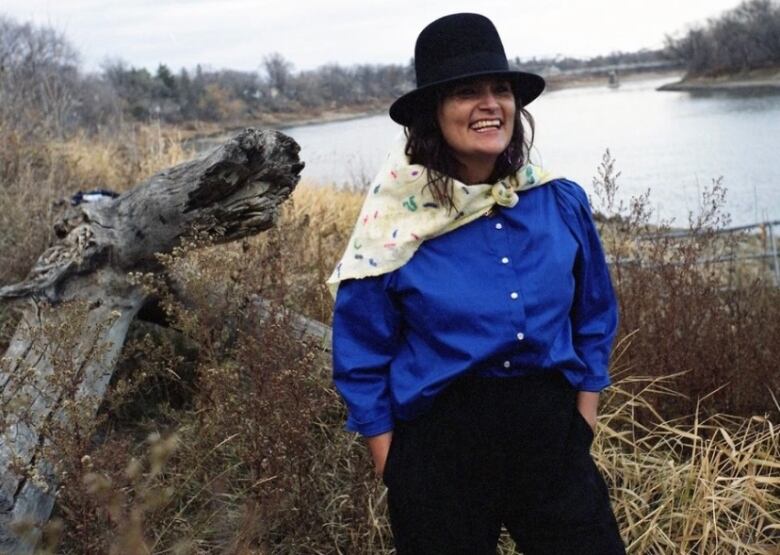Belly button keepsakes a symbol of connection to culture and family
Métis doula offers workshop on making pouches to hold umbilical cord stump

A Métis doula hopes to empower Indigenous women by sharing the cultural practice of keeping and honouring their child's umbilical cord stump after birth.
Candace Neumann, a Red River Métis doula based in Winnipeg, has worked with Anishinaabe and Cree communities across Canada and the Navajo Nation.
After the umbilical cord is cut following birth, a stump remains attached to the infant at their belly button. It falls off a few weeks later.
Neumann has learned different teachings from Indigenous communities that keep the umbilical cord stump.
"That's that connection the baby has to its parents, to its mama and to its ancestors," Neumann said.
"It really helps to ground us, and heal us, and heal the land and our communities, our families. We're all worthy of that sacredness."
Neumann said some keep the umbilical cord in a mini pouch, similar to a medicine bag, or another special container. She said it can be hung on the tikinagan (cradleboard) while others may choose to bury it with the placenta.

Neuman said because some cultural traditions were lost over time due to colonization, some people are unaware of the practice.
Neumann will be teaching a workshop on how to make the special pouches at Mentoring Artists for Women's Art Wednesday in Winnipeg.
Placed in a rattle
Marlena Muir, a Cree Métis mom of two from Selkirk, Man., said she hopes taking part in traditional practices like keeping the umbilical cord will give her children a sense of purpose and place in the world.
"With the belly buttons, what my mother-in-law did, we kept the belly buttons after they fell off, and [she] made a rattle, and put the belly button inside the rattle," said Muir.
Muir said when her son is old enough, the rattle will be given to him, or his grandmother may keep it for him.

Muir also buried her placenta where her children had familial land from their father's side, near Sandy Bay First Nation.
She said items kept or buried with the umbilical cord and the placenta are meaningful.
"If we want them to do well in school, we'll put in a notebook," she said.
"If we want them to be good hunters, we'll put in a mini bow and arrow. It's all about setting those intentions for what you want your child to have in life."
Yukon hospital provides pouches
As part of First Nations health programs at Whitehorse General Hospital, pouches to hold the umbilical stump are provided to every new Indigenous mom as part of a welcome kit for their newborns.

Darla Jean Lindstrom, the hospital's cultural programs co-ordinator, said women in various neighbouring communities have participated in making the pouches for the program. The kits also include an information card about the meaning of the pouches and postpartum tea.
"In my family, we pray each other in, and pray each other out," said Lindstrom, who is Tagish and Tlingit from Carcross, Yukon.
"If the opportunity presents itself, we can say a little prayer with the baby. It's given after the birth."
Lindstrom said taking part in cultural practices is important for health and well-being.
"It's about reconnecting with who we are as Indigenous people, and we're honourable people from birth to death, and beyond."

